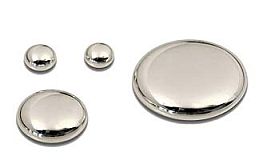Urine Heavy Metal Test

Urine Elements
Urine element analysis is traditionally used to assess exposure to toxic elements like lead, mercury or arsenic, but can also be used to measure essential elements.
Essential Elements
Essential elements are involved in virtually all metabolic and biochemical processes, and urine levels are generally reflective of recent intake. Therefore, urine testing for essential elements may be helpful in assessing nutritional status. For example, urine selenium levels correlate well with patient-reported hypothyroid symptoms. Numerous essential elements with low or very low levels in urine may indicate problems with absorption. The presence of toxic elements may also interfere with normal excretion of essential elements.
Toxic Elements
Acute significant exposure to toxic elements is rare and may even constitute a medical emergency, whereas chronic low-level exposure often goes undetected. Toxic elements appear in urine immediately after exposure, which makes urine element testing useful for assessing potential toxicity. The sequestration of toxic elements in body tissue stores may eventually result in symptoms. For example, mercury and lead accumulation can cause higher rates of Parkinsonism, cognitive decline, depression, nausea, fatigue, developmental delays, neurological and movement disorders. Cadmium toxicity is associated with increased risk for osteoporosis, kidney damage and cancer. In fact, many symptoms of chronic heavy metal toxicity are similar to those of neurological, kidney and digestive disorders; making it nearly impossible to identify the root cause without testing.
Oral or intravenous chelation is used to remove toxic elements from storage sites in tissue.
Chelating Agents
Pharmaceutical chelating agents like DMPS, DMSA and EDTA mobilize toxic and essential elements from tissue stores, allowing the newly liberated elements to be excreted in urine. Many health care providers measure urine elements after administration of a chelating agent called post provocation.
